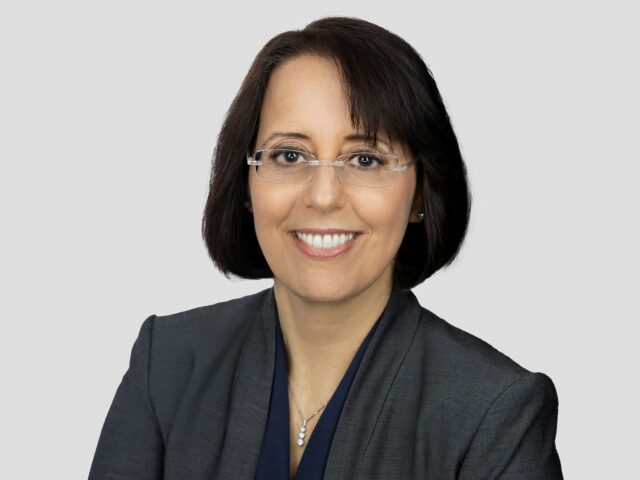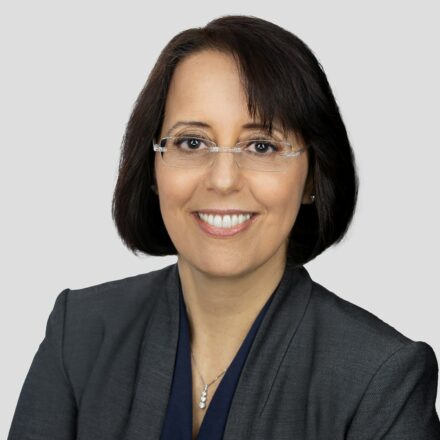By Sara Downey, thought leadership, Dell Technologies
When Hanna Yehuda was growing up in Israel, she was sure she’d be an artist. But in a surprising twist, career placement tests from the Israel Defense Forces routed her toward computer engineering. Yehuda spent the best part of a decade in the Israeli Air Force, learning and leading user interface design and development projects. She struggled with engineering early on and even tried to quit at one point. But her talent shone through, despite the challenges, and her superiors encouraged her to stay.
“I realized then you can actually find satisfaction, and even joy, in any place you go. You just have to plant the seed, let it blossom and go after it.”
—Hanna Yehuda, senior distinguished engineer, Dell Technologies
Yehuda grew to truly love her work too, eventually moving to the U.S. for a position with Dell Technologies (formally EMC). She’s now a senior distinguished engineer, reporting to the ISG Experience Design Group and the Office of the CTO, one of the only three women to earn such a title. She says that passion and purpose pilot her success—and she seeks that spark in all of her work.
By doing so, she’s taught leaders and decision-makers across ISG to rethink its design and development processes, in order to pursue an experience-led architecture approach, co-authored a book, raised three children, and earned more than 50 patents.
I had the opportunity to talk with Yehuda about her life and her work and why passion connected with purpose is at the heart of everything she does.
You said that you were initially interested in art, but a set of tests from the IDF changed your life. Can you tell us more about that?
My dad was an artist and was always painting after work. My mum was artistic too. That gene passed to me. But my family struggled economically. My parents immigrated from Morocco to Israel with four kids with basic education needs and no knowledge of the language. When I got to high school, I knew that I wanted to study art. But my dad advised against it. He said there’s no money in it—it’s hard to make a living and they couldn’t support me financially.
In Israel, every woman has to go into the armed forces for two years. So, I went with a friend to take some career placement tests. It turned out I was the perfect fit for computer engineering, which was a test that’s very hard to pass. I said that I wasn’t going to do it, but my brother insisted I give it a try. I was immediately drawn to user interface design. I loved drawing and understanding the person behind the product. I ended up becoming a commander and stayed for nine years. At first, I thought I didn’t have a choice in my career. But then I realized I am the master of my life’s path. I sought passion, conviction, and joy in everything I did. That passion is what propels my determination to keep going.
You’ve had a career of breaking through glass ceilings. Can you talk about some of your achievements and why they’re important to you and others at Dell?
My parents grew up in a culture where women often have no equality in the house. So, since day one, I’ve always been deeply passionate about fighting to make women equal. In doing so, I have had to break through many glass ceilings. The first time was how I got into design at Dell. I’d been hired as an engineer in the storage division. But deep down I still wanted to draw.
Our team had no UX component, so I started working on design during my off-hours—during lunch and after work. After a year, the head of storage came to me and said he’d noticed everyone was coming to me for UX design. He offered me a lead UX designer position. I couldn’t believe it. I had achieved something I didn’t think was even on the table.
I broke another glass ceiling when I became a distinguished engineer. I wanted to move UX into the project incubation phase, but that process didn’t exist. I was transferred to the office of the CTO to help drive a culture change in how we design products. I’ve never put importance on titles. I’ve just wanted to enjoy what I do in my work, and when I’ve made that the priority, it’s worked out.
You’ve recently co-authored a book, Compassion-Driven Innovation. Can you tell us more about compassion-driven innovation and what inspired the book?
My inspiration is what “compassion” means to me. You know, sympathy is about caring about someone’s suffering. Empathy is feeling someone’s suffering. But compassion is, “I want to relieve your suffering”. So, I collaborated with two remarkable women to create this book because we wanted to help anyone who is trying to innovate to do so in a way that relieves the pain of their users and clears challenges for pathfinders looking to effect change and create solutions. The book lays out 12 practical steps to compassionate-driven innovation.
Truly, over my career, working with both startups and enterprise companies, I’ve made each step a guiding principle. Since the book was released, we’ve heard people say it’s not just for UX practitioners–it’s for business people and anyone interested in creating holistic solutions.
You’ve had much success, but not without some hardships along the way. Can you talk about how you’ve been able to overcome these?
It was not always easy. I moved to the U.S. with two children to start a full-time job. My children did not know the language. I did not have any family here to help, so from that perspective, it was hard. One of my daughters was later diagnosed with dyslexia, and during the process, I realized that I had all the same symptoms. It dawned on me that over the years, I’d dealt with it by being creative in how I learned and studied, never giving up or desisting from aspiring. I compensated for the lack of specialized support.
I got through a lot of challenges by focusing on the right thoughts. I realized that thoughts drive feelings and feelings drive actions, so my thinking needed to be positive. I needed to talk nicely to myself and advocate for myself, because honestly, back then, I didn’t have many sponsors. I had to break through the ceilings alone.
My hope is that my daughters and all girls around the world will be able to focus on doing their work with passion, fearlessness, and will be sufficiently inspired to fulfill their abilities and dreams. I hope that they will not find themselves hemmed in by glass ceilings. I want all women to discover their innate skills and lead full lives, for their sake and the betterment of society. I seek out opportunity and purpose and come to the table with a can-do spirit, to be an example to other girls and women. If I live this way, I hope they will also be emboldened. That is my ultimate purpose—to be a torchbearer.
Breakthrough Champions is a series on Perspectives profiling ordinary Dell employees doing amazing things to advance digital transformation. The series is inspired by Dell’s “Breakthrough” platform and the belief that progress happens at the intersection of people and technology.
Check out the next article in the series, which profiles ER nurse turned technologist, Connie Hebert.

